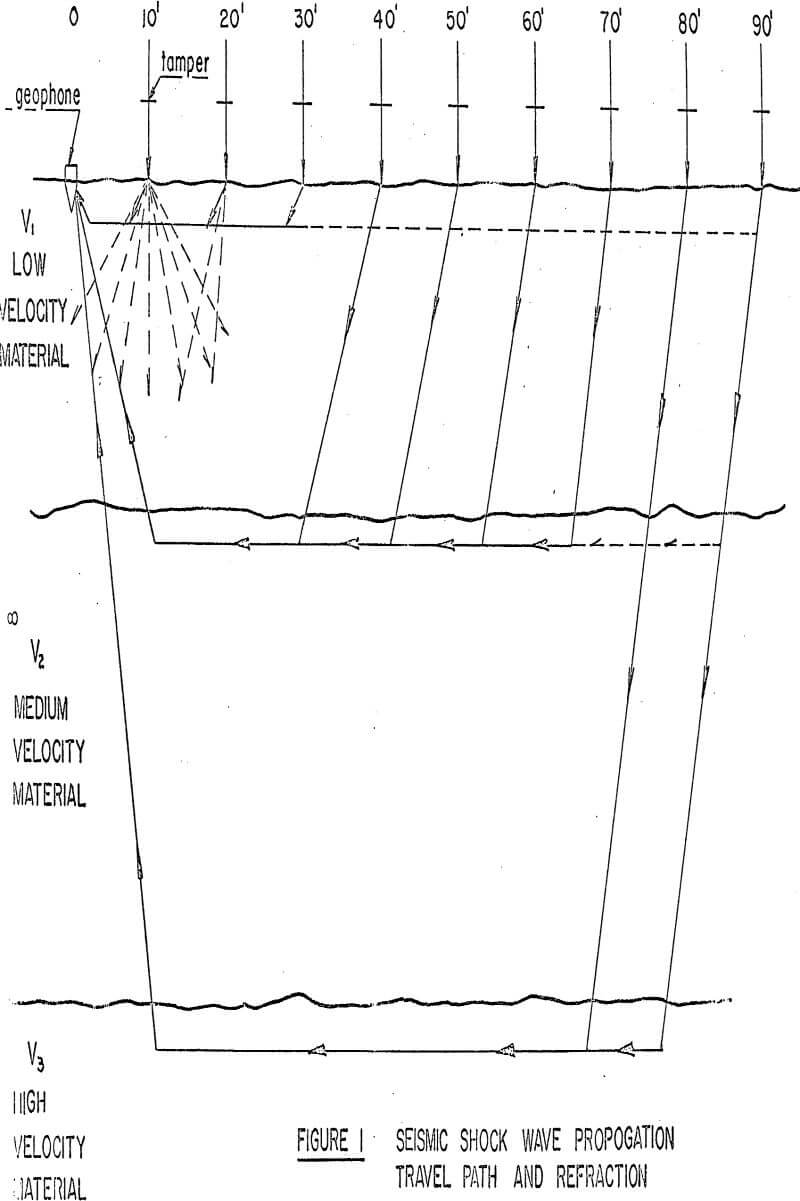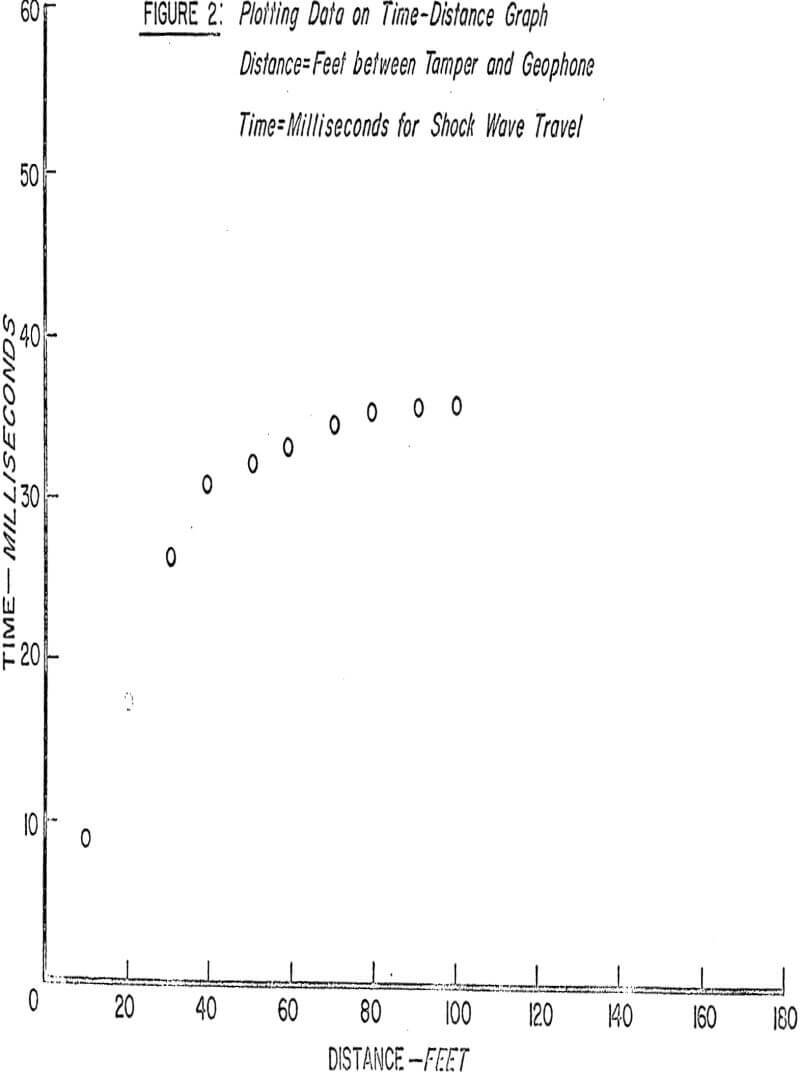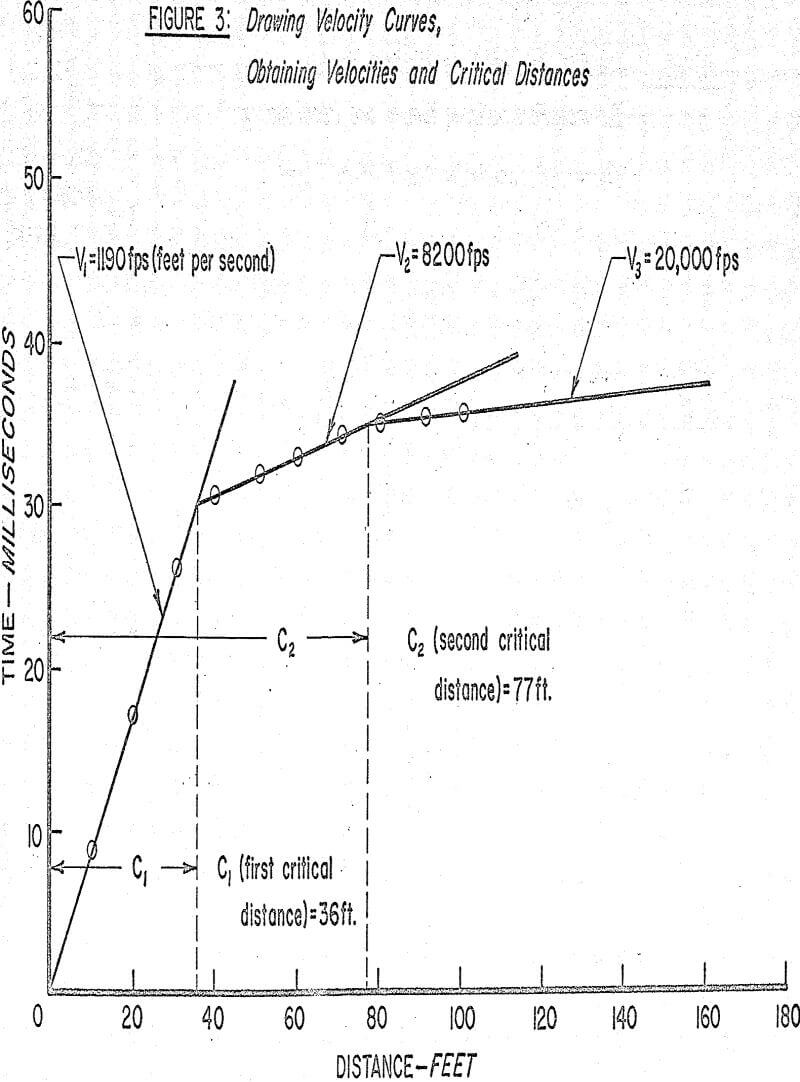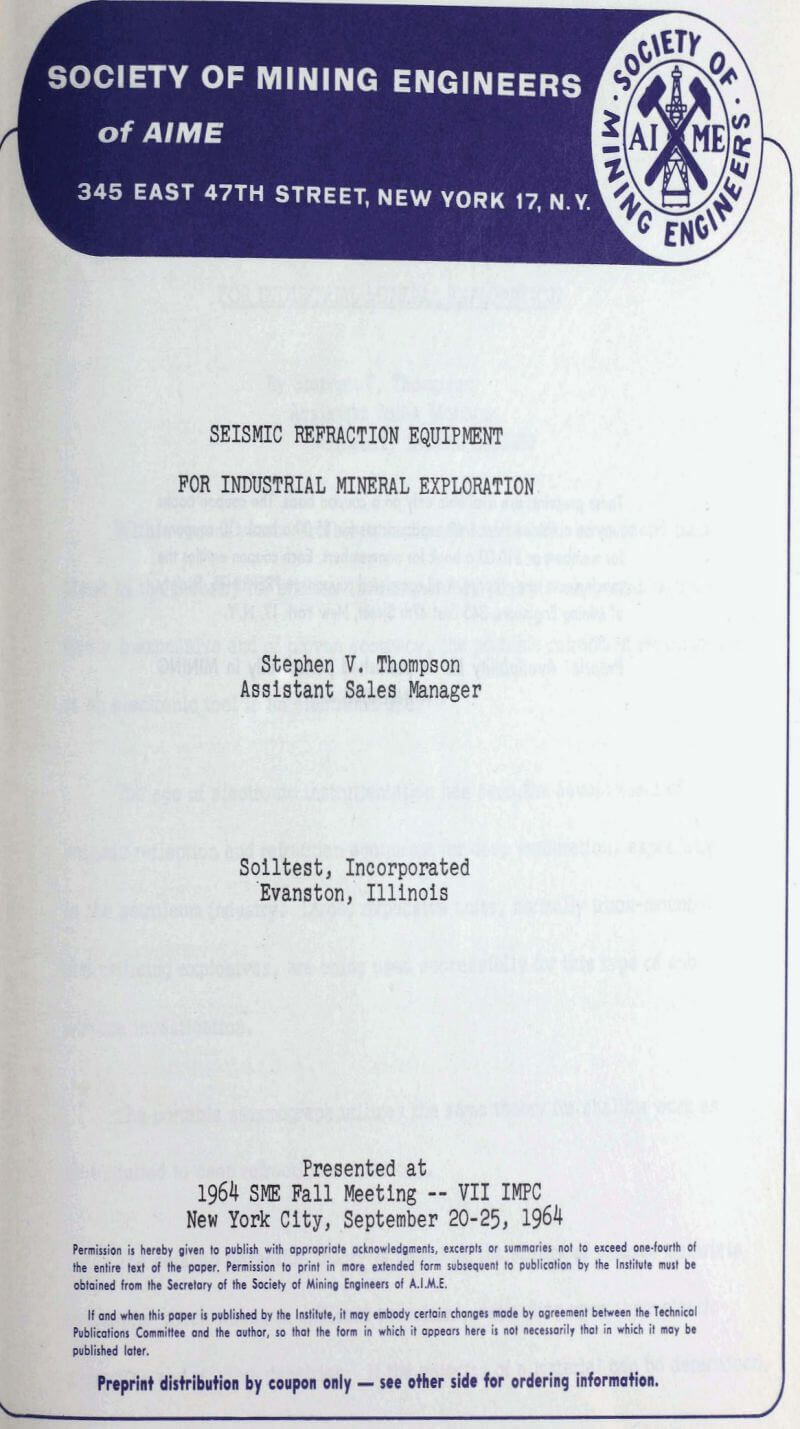Within recent years portable seismic refraction units have found their place in the industry for shallow investigations. Completely portable, relatively inexpensive and of proven accuracy, the portable refraction seismograph is an electronic tool in an electronic age.
The seismic refraction theory is based on the ability of various materials to transfer shock waves at different velocities, depending upon their elastic properties and relative densities. If the velocity of a material can be determined and the area is geologically familiar, the material can be classified as to type and relative density.
The instrument detects the first and subsequent shock waves which reach the geophone from the point of shock wave initiation. The fastest possible travel path for the shock wave is indicated by the heavy-black arrowed lines. As indicated in the diagram the first wave to reach the geophone will naturally travel the fastest possible path which is dependent on the relative densities of the sub-surface materials. At successive intervals between the geophone and shock wave initiation, a time reading is taken for the arrival of the first wave. This time reading is then plotted on a time-distance graph. The time is measured in milliseconds (1/1000 of a second) while the distance is measured in feet, or meters, between the geophone and point of shock wave initiation.
The application of the portable seismic refraction units in the industrial mining industry is relatively new. However, great strides have been made by companies in mining areas throughout the United States and overseas where shallow investigations are being made for locating basic raw materials.
Sub-surface exploration is expensive utilizing conventional drilling and sampling methods. However, through the use of the portable seismic refraction equipment, the number of borings or core holes required may be reduced and more intelligent location of these, exploration holes can be made.




